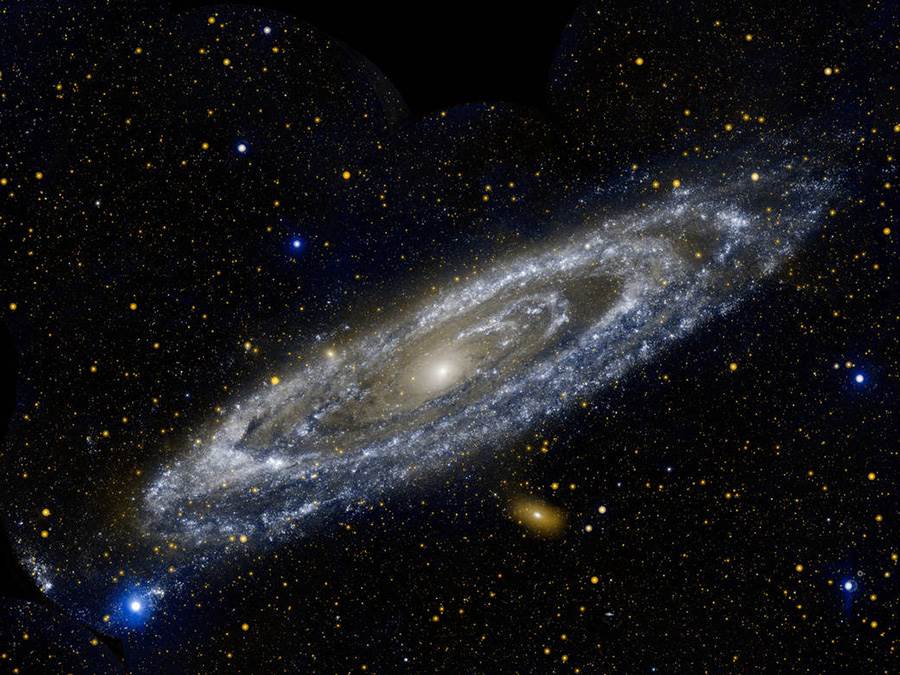
When two galaxies collide in space, a captivating and chaotic cosmic event occurs. During this extraordinary encounter, the gravitational forces between the galaxies cause them to intertwine and merge over vast periods of time. The process of galaxy collision is a slow and gradual one, as these immense celestial bodies do not frequently come into direct contact due to the vast distances between them. However, when they do collide, the results are truly remarkable.
During a galaxy collision, the outer regions of the galaxies interact first, causing long tidal tails to form. These tails are composed of stars, gas, and dust that have been flung into space as a result of the collision.

The immense energy generated during a galaxy collision triggers the formation of new stars, as gas and dust are compressed and ignited. This phenomenon leads to a surge in star formation, creating bright bursts of light within the merging galaxies. Additionally, the galactic collision can result in the activation of supermassive black holes at the centers of these galaxies, leading to the release of powerful jets of high-energy particles into the surrounding space.
Studying the aftermath of galaxy collisions provides scientists with crucial insights into the formation and evolution of galaxies. By observing these cosmic encounters, researchers can better understand the mechanisms that drive the changes in the structure and composition of galaxies over time. The collision of galaxies is a dramatic and awe-inspiring event that showcases the immense power and beauty of the vast universe in which we reside.








